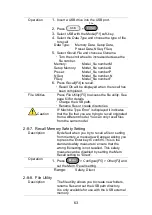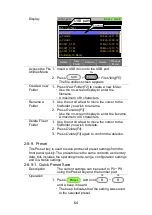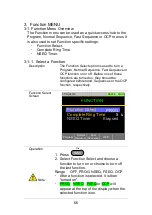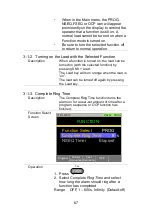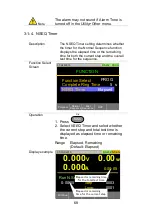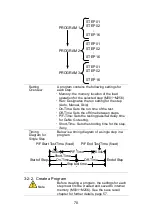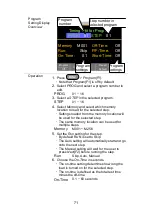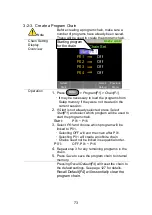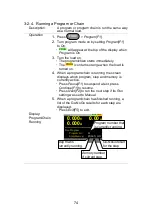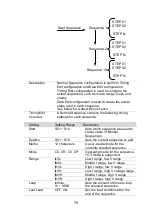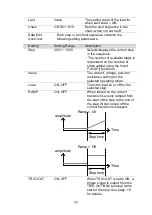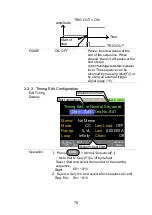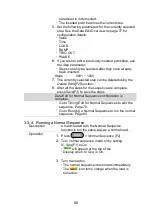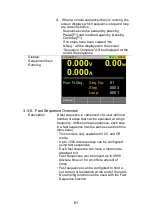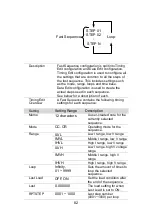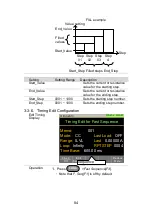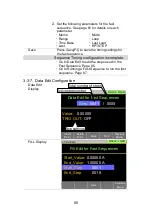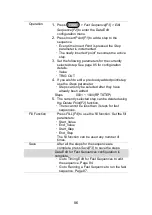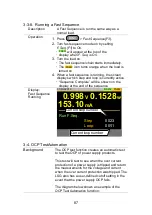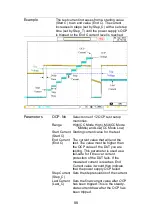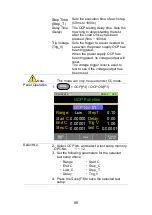
75
Display:
Program/Chain
Finished
Exit
PROG
RS232
31/Oct/2013
Run Program Detail Result
1
1
1
Program
3
2
1
Step
NG
GO
GO
Result
3-3. Sequence
The LSG Series supports both programs and sequences. The
essential difference between programs and sequences is that
programs can use different operating modes for each step while
sequences use the same operating mode throughout the whole
sequence. In effect sequences are used to create complex load
simulations.
There are two different types of Sequences, Normal Sequences and
Fast Sequences.
Normal sequences can define the execution time and slew rate of
each step.
On the other hand the execution time for each step in a fast
sequence is fixed to the rate (Time Base setting) set by the user.
3-3-1. Normal Sequence Overview
Description
A normal sequence is comprised of a user-defined
number of steps that when executed in sequence can
be used to simulate a DC load.
・
Up to 1000 discrete steps can be configured using
normal sequences.
・
Each normal sequence can have a memo note
attached to it
・
Normal Sequences can be looped up to 9999 discrete
times or for an infinite amount of times.
・
Normal sequences can be configured to hold a set
voltage, current, power or resistance at the end of the
load.
・
Normal Sequences can be linked together in a chain.
Summary of Contents for LSG SERIES
Page 8: ......
Page 23: ...11 GRA 414 E EIA standard 132 382 5 477 6 GRA 414 J JIS standard 149 382 5 477 6 ...
Page 149: ...137 7 6 Operating Area LSG 175 ...
Page 150: ...138 LSG 350 ...
Page 151: ...139 LSG 1050 ...
Page 166: ......



